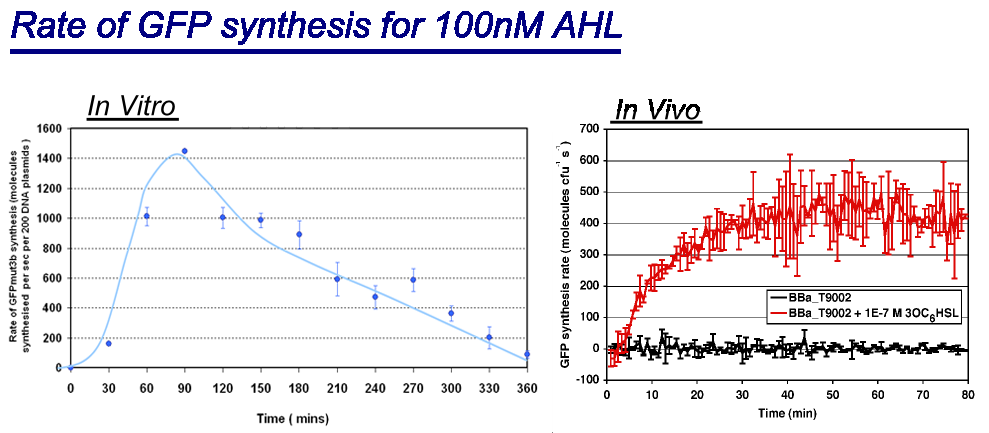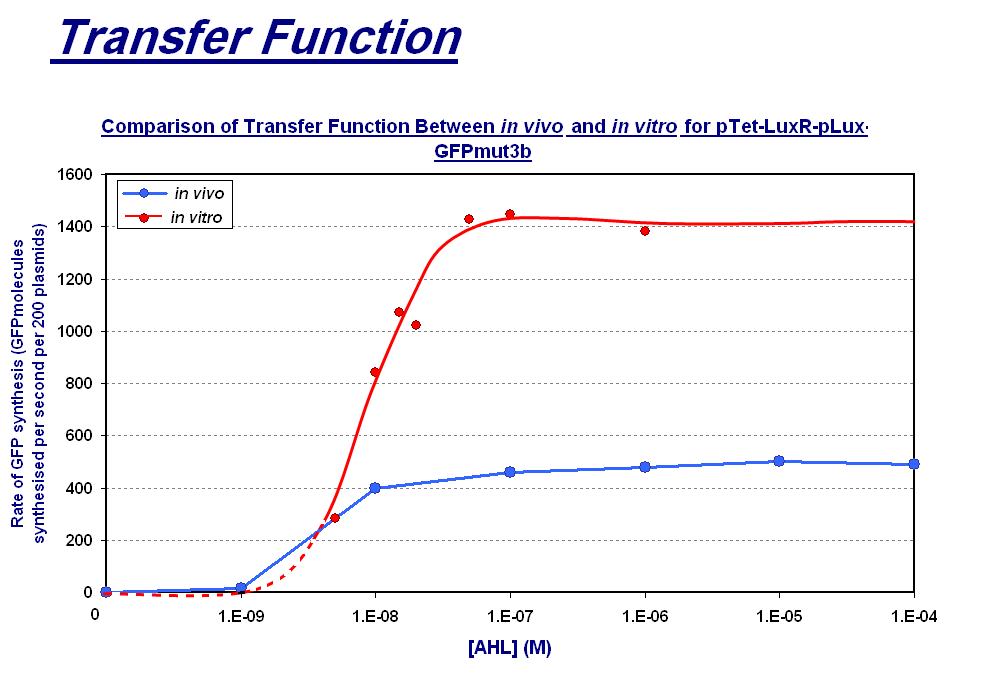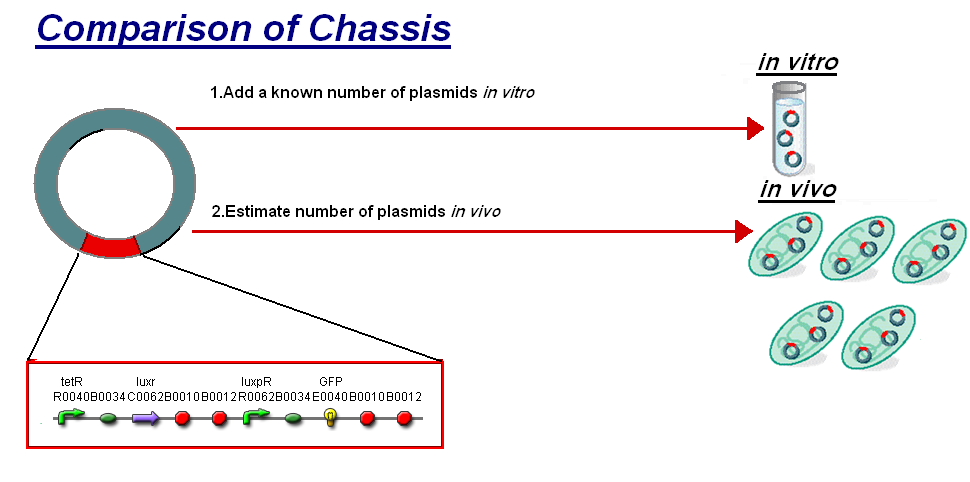Imperial/Infector Detector/F2620 Comparison
From 2007.igem.org
(→Summary of Comparison) |
m (→Transfer Function) |
||
| Line 66: | Line 66: | ||
|<center>[[Image:Comparison of transfer function.PNG|700px]]</center> | |<center>[[Image:Comparison of transfer function.PNG|700px]]</center> | ||
|- | |- | ||
| - | |style="text-align: left;" |The graph above shows the transfer function of '''[AHL] <font color=red>input</font>''' vs '''rate of GFP synthesis <font color=red>output</font>'''. The graph shows the max rate of synthesis | + | |style="text-align: left;" |The graph above shows the transfer function of '''[AHL] <font color=red>input</font>''' vs '''rate of GFP synthesis <font color=red>output</font>'''. The graph shows the follwoing: |
| + | *''in vivo''(blue line) '''max rate of synthesis''' which is the steady state that is reached after about 30 minutes | ||
| + | *''in vitro''(red line) '''max rate of synthesis''' which is the rate between 60 and 90 minutes which is the maximum rate before the energy limitations of the system cause the rate to drop. The dotted red line represents the expected transfer function for the lower AHL concentrations that we did not collected data points for. | ||
<br> | <br> | ||
| - | The key | + | |
| + | The key differences are between the chassis is the rate of GFP synthesis which is lower in the ''in vitro'' chassis e.g. for 1000nM of AHL the rate of GFP synthesis ''in vivo'' is ~450 GFP molecules per sec per cell,'' ''in vitro'' has an equivalent value of 220 GFP molecules per second.<br> | ||
<br> | <br> | ||
The shape of the transfer function is very similar for both chassis, both begin to saturate at around 1000nM of AHL and the threshold of sensitivity is around 1nM AHL. It is very surprising that a construct works so similar in different chassis, showing the affect of the chassis is minimal to the constructs behavior. | The shape of the transfer function is very similar for both chassis, both begin to saturate at around 1000nM of AHL and the threshold of sensitivity is around 1nM AHL. It is very surprising that a construct works so similar in different chassis, showing the affect of the chassis is minimal to the constructs behavior. | ||
Revision as of 23:47, 26 October 2007

Summary of Comparison
We thought to compare our in vitro characterisation to the characterisation of [http://partsregistry.org/Part:BBa_F2620 F2620] in vivo with the aim to highlight some of the differences between the chassis and investigate how the construct's characteristics may change between them. The [http://partsregistry.org/Part:BBa_F2620 F2620] is an ideal construct for comparison because of its detailed characterisation in vivo. The construct is the same as the construct 1 that was used for infecter detector, pTet-LuxR-pLux-GFPmut3b. The key results of the comparison were:
- The creation of a new unit to allow comparison between in vitro and in vivo chassis.
- That although we are changing the E.coli chassis from in vivo to in vitro the construct's characteristic response is independent of the chassis.
These are exciting findings, revealing the potential for the exploration of new chassis and the ability to use constructs in an exchangable manner.
 |
| Comparison between in vivo and in vitro for rate of GFPmut3b synthesis for 100nM AHL. The in vivo chassis used was the bacterial strain MG1655 and the in vitro chassis was Promega Commercial S30 Cell Extract(60µl)
Key Difference:
Interestingly the values of rate of synthesis are in the same order magnitude of hundreds, this suggesting that the normalisation we are using to compare these chassis is valid. |
Transfer Function
 |
The graph above shows the transfer function of [AHL] input vs rate of GFP synthesis output. The graph shows the follwoing:
The key differences are between the chassis is the rate of GFP synthesis which is lower in the in vitro chassis e.g. for 1000nM of AHL the rate of GFP synthesis in vivo is ~450 GFP molecules per sec per cell, in vitro has an equivalent value of 220 GFP molecules per second. |
